Nearly every triathlete or cyclist has heard the phrase ‘free speed’, with people jumping off the sag wagon and onto the ‘free speed’ bandwagon. So what is free speed and how do we achieve it…? The simple answer is by being aero! The term aero is a colloquial term for cyclists and triathletes for reducing their aerodynamic drag and becoming more aerodynamic.
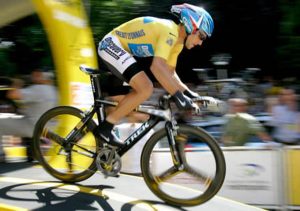 Could it be possible that ‘aero’ isn’t everything and you can become a faster cyclist by completing ignoring aerodynamics?
Could it be possible that ‘aero’ isn’t everything and you can become a faster cyclist by completing ignoring aerodynamics?
What is Aerodynamics?
Aerodynamics is a field of fluid dynamics that involves studying the motion of air, in particular the interaction of bodies moving through it. The study of aerodynamics is incredibly complex requiring empirical approximations and advanced computational models to produce accurate results. The issue with this type of analysis is it is highly iterative and there are numerous properties that need to be considered and analysed every time.
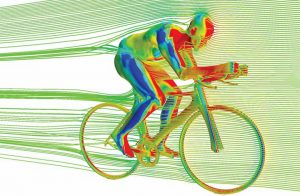
Computational Fluid Dynamics Model of a Cyclist
A small change to one of these properties from the baseline wind tunnel testing may seem negligible, however by simply wearing gloves, a different clothing material or mounting another drink bottle can produce significant changes to the resulting drag force and YOU LOSE ALL THOSE PROMISED EXTRA SECONDS OF FREE SPEED!!!!
Below is the basic drag equation:
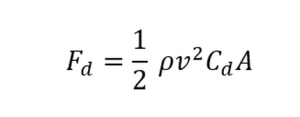
Where:
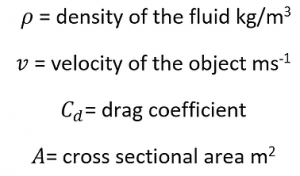
From this equation there are three variables that are significant and can be controlled or changed by the cyclist. Every cyclist should know and understand these three variables before splurging $5k+ on a new TT bike and aero gear.
The Importance of Velocity (v)
Perhaps the single most misunderstood variable and the most valuable variable to understand when being ‘aero’ becomes relevant. From the equation above we can see that drag forces increase with the square of speed. The graph below illustrates quite clearly that our drag forces on the bike at speeds below 30km/h are relatively low, however the resistance from drag above 30km/h starts to have a significant impact.
Key Take Away: If you are struggling to consistently ride above 35km/h for the duration of your rides, forget everything to do with purchasing special aero equipment and focus on developing your cardiovascular system and your lower body strength to allow your body to ride at these higher speeds.
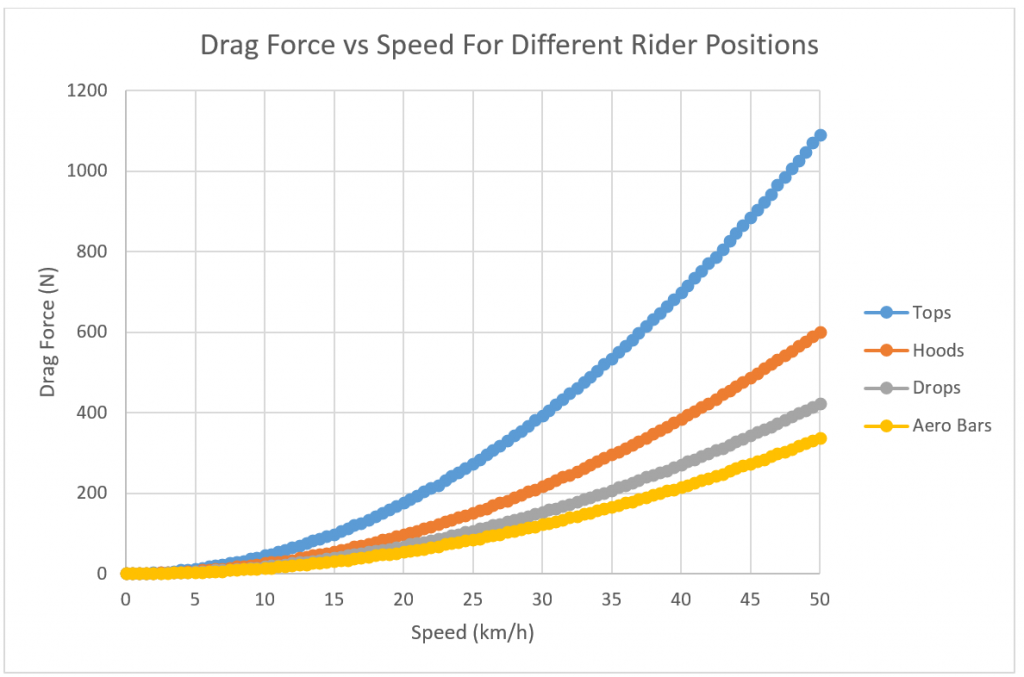
The Importance of Body Position
The body position of the cyclist has one of the largest impacts on the drag resistance forces felt by cyclists, due to the large frontal area the body occupies. The two factors that govern the drag created by the body are the drag co-efficient , this is a dimensionless quantity that is used to quantify the drag of an object and cross sectional area of the cyclist’s body. As you can see from the figure below, the area the cyclist’s frontal area occupies reduces by lowering the position of the body. By lowering the cyclists body position, the drag co-efficient also decreases.
From the previous graph we can quantify the effect of lowering the body position on drag force. By simply lowering your body onto the drop bars instead of sitting up on the top bars at 40km/h, the drag force is 427 N less.
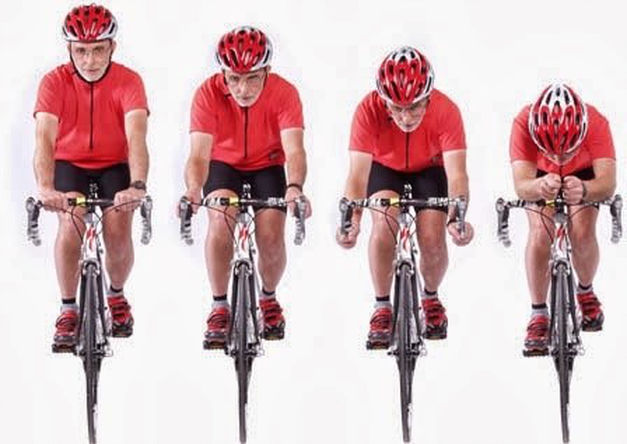
Different Cycling Positions
Key Take Away: Your body is by far the largest object on a bike when cycling. By simply lowering your body position on the bike, you will significantly reduce your drag forces when cycling at higher speeds. As an amateur triathlete or cyclist your hard earned money is better off spent on finding a specialist bike fitter, who can optimise your position and comfort (with the bike you have and can afford) that will actually result in decreased drag and not on the empty promises of a well-designed marketing campaign.
Most Important Factor Before Considering Aero
Speed Increase your SPEED!!!
If you cannot consistently ride above 35km/h forget all the bells and whistles, they will not help you go faster if you can not ride fast in the first place.
Our Top 5 Tips for Getting Faster on the Bike
- Find a cycling or triathlon coach;
To become faster and ride longer you need to create a well-tuned machine i.e. your cardio-vascular system. Don’t wing this and think its wasted money. A knowledgeable coach will produce better results with less training. Meaning you will be a faster and fitter athlete with less injuries due to over training.
- Find a strength coach and get in the gym;
- Simply put if you want to ride faster, you must be able to produce more force than person riding next to you. A knowledgeable strength and conditioning coach, not a personal trainer, will tailor a specific strength program to maximise your force output in consultation and unison with your current training plan from your triathlon coach. Proper strength training will not hinder endurance athletes if it is designed and integrated correctly.
- Find a nutritionist;
- To improve your athletic performance and maximise recovery, you need to “feed the machine” correctly. Find a qualified sports nutritionist and you will be shocked at the improvements you will see and almost certainly that you aren’t eating enough!
- Find a good physio;
Without a doubt every athlete will get injured. Find the best physiotherapist in your area who focuses on injury prevention rather than reacting once you are injured. Investing in injury prevention will work wonders in consistently building the hours spent on the bike to build and maintain a strong and effective cardiovascular system.
- Optimise body position;
- Find a trusted and knowledgeable bike fitter that understands the physics of aerodynamics and the practical biomechanical aspects of bike set up. This investment is so valuable to enjoying your time on the bike, reducing injury and becoming a faster cyclist.
Forget everything the big cycling companies have marketed to us over the years, unless you are pro, aero is a no go! Yes, this stuff has its place if you consistently average +35km/hr on the bike. But to get the most value for money, and for those who aren’t averaging high speeds on the bike, fitness and strength are far better investments. Your primary focus should be to develop yourself into the most effective and efficient athlete.